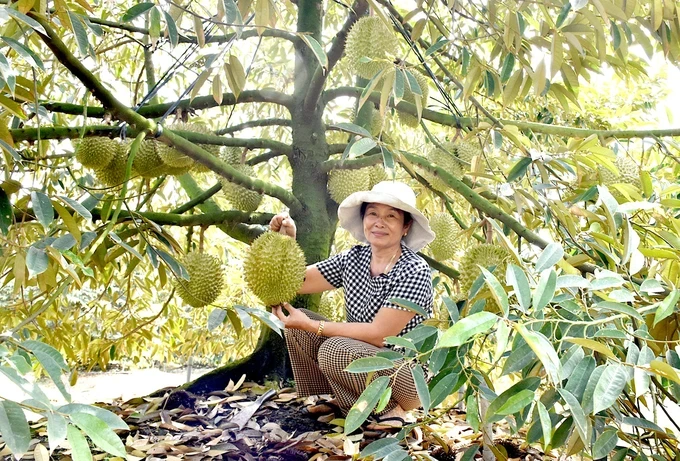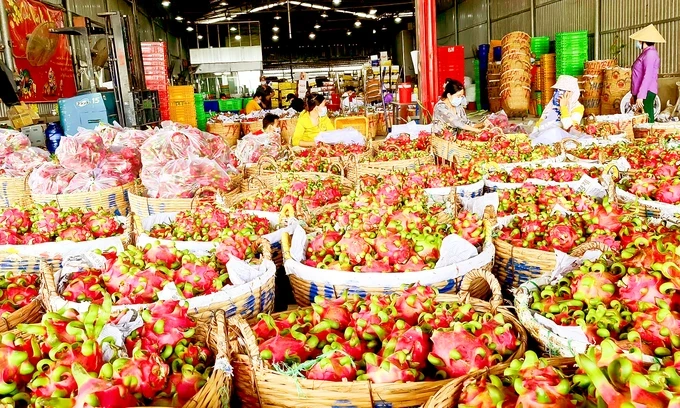Brand building necessary for Vietnamese farm produce to increase competitiveness
Vietnamese agricultural products face challenges in the global market due to factors like price competition and inconsistent quality. According to experts, establishing strong brands can address these issues.

Vietnam's agricultural sector has seen advancements in various areas recently; however, it remains largely fragmented and operates on a small scale.
Additionally, the cyclical nature of ‘planting and cutting’ or ‘good harvests with low prices and poor harvests with high prices’ continues to occur without regulation. A significant portion of agricultural products is exported in their raw state, resulting in low added value, which is a prevalent issue. For instance, when pepper prices surged to VND120,000 per kg in 2011, farmers in the Central Highlands significantly increased their cultivation area by replacing coffee and short-term crops with pepper.
In the Central Highlands Province of Gia Lai, within just a few years, the area for pepper cultivation surged from approximately 6,000 hectares to nearly 15,000 hectares, with Chu Puh District alone expanding to 2,800 hectares. However, during the rainy season of 2015, when pepper prices reached a peak of VND270,000 per kilogram, a widespread disease began to affect the pepper plants.
Farmers in districts such as Chu Prong, Chu Se, Dak Doa, and Mang Yang were taken by surprise as their once-thriving green pepper plants rapidly turned grey and withered. A significant number of these plants perished, leading farmers in Chu Puh and Chu Se districts to uproot them. By 2019, nearly 9,000 workers from these districts were compelled to leave their agricultural jobs and seek employment elsewhere due to the failure of the pepper crop.
The "planting - cutting" cycle, once witnessed in pepper cultivation, is now affecting cashew trees in Vietnam. In Dak Nong Province, where cashew trees were once seen as a path to prosperity, farmers are facing hardship due to declining prices since 2020. This trend highlights the vulnerability of agricultural economies to market fluctuations and the urgent need for diversification and sustainable farming practices.
Farmer Nguyen Van Long in Quang Tan Commune of Dak Nong Province’s Tuy Duc District said that in recent years, cashew trees have continuously failed. For instance,the worst cashew crop failure was recorded in 2023, only 1 quintal a ha was harvested. Realizing that the climate has changed a lot and become no longer suitable for cashew trees, the farmer Long decided to cut down cashew trees in 1.5 hectares to grow durian and 900 coffee trees.
Similarly, farmer Nguyen Van Chi, also in Quang Tan Commune switched from grown cashew trees to durian trees. He cut down 2.5 hectares of cashew and made an irrigation system for planting durian trees. He bought 200 durian seedlings for future cultivation.
Along the Trung Luong - My Thuan expressway in the Mekong Delta, the previously lush rice fields have transformed into orchards, predominantly featuring durian trees aged between 1 to 5 years.

Farmer Nguyen Thi My in My Phu B hamlet in Hau My Phu Commune of Tien Giang Province, was among the first to transition from rice cultivation to durian farming in the area. She initially considered switching to Thai jackfruit due to the low income generated from rice. However, after assessing the market conditions, she realized that jackfruit yields inconsistent profits, leading her to opt for durian cultivation instead.
Farmers’ decision of rapid expansion of durian cultivation in Tien Giang and Long An provinces has been driven by the allure of high profits which is raising concerns among agricultural experts. The indiscriminate conversion of land, including areas unsuitable for durian due to alum contamination, threatens the long-term sustainability of the region's agricultural sector. This situation underscores the need for careful planning and a shift towards more sustainable and diversified farming practices.
Vice Chairman Phan Thanh Son of Cai Be District People's Committee shared that due to the high price of durian in recent times, people have switched to growing durian. From 2021 to now, in the area north of the National Highway 1A of Cai Be District, people have grown fruit trees in nearly 1,400 hectares which used to be paddy fields and the area for old fruit trees. Farmers have mostly grown durian with 930 hectares. Therefore, up to now the district has more than 7,000 hectares of durian.
The area for durian cultivation has expanded in recent times in districts such as Phung Hiep in Hau Giang Province, Phong Dien, Thoi Lai in Can Tho City, and Giong Rieng in Kien Giang Province. However, not all farmers have realized economic success. For instance, in 2023, numerous durian plantations in Giong Rieng District suffered losses due to insufficient water supply and salinity issues.
According to the Ministry of Agriculture and Rural Development, agricultural products account for a large proportion of Vietnam's exports with an annual turnover of about US$50 billion, of which vegetables and fruits play a key export role. Vietnamese vegetables and fruits are present in most major import markets, including markets with strict requirements on quality standards such as the US, EU, Japan and Korea.
However, while Vietnamese fruits and vegetables are present in demanding markets, the lack of branding and labeling for nearly 80 percent of products hinders their ability to compete effectively and capture a larger share of the global market.
Plus, Vietnam is recognized as the second largest coffee exporter globally; however, the branding associated with this product remains relatively unclear. The exported coffee often lacks distinct branding, resulting in limited recognition among international consumers. Consequently, these products typically rely on foreign intermediary companies or are processed under well-known foreign brands.
Not only that, many typical agricultural products with very high quality in the country such as ST25 rice, coconut, mango, dragon fruit, have been exported in raw form, and have not received attention for brand building and development.
The lack of industry organizations leading the way makes it difficult for Vietnamese agricultural products to position their brands and set prices when entering foreign markets. Based on reality, Deputy Director Huynh Thanh Su of the Department of Industry and Trade in Can Tho City, expressed that while Can Tho's rice has a long-standing reputation, the brand has yet to achieve significant recognition beyond its local market.
General Director Nguyen Dinh Tung of Vina T&T Company and Vice President of Vietnam Fruit and Vegetable Association expressed his concerns, stating that numerous domestic companies primarily compete with foreign firms based on pricing rather than quality. He emphasized that without stable output and quality, it is impossible for establishing a national brand for Vietnamese agricultural products.
According to many experts, Vietnam has successfully accessed competitive markets like the US, EU, and Japan by implementing various trade agreements. While Vietnam exports a wide range of agricultural products, it is essential to select distinctive items for promotion and develop a systematic marketing strategy. Consequently, establishing a national brand for Vietnamese agricultural products has become increasingly critical.








